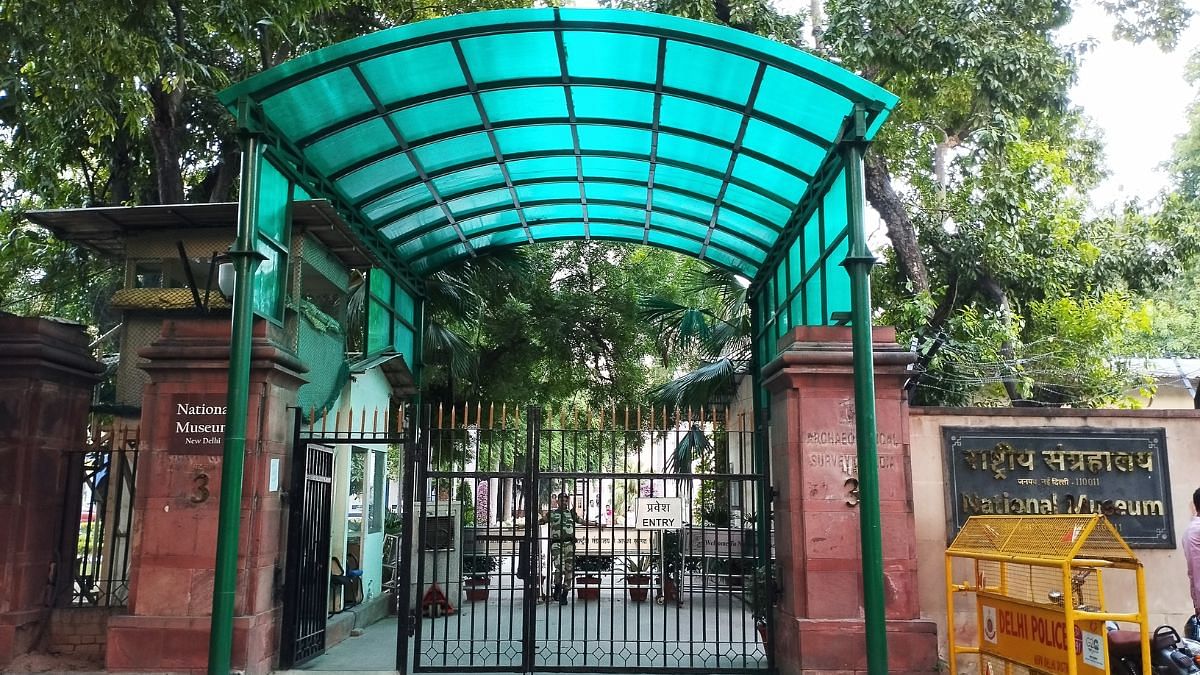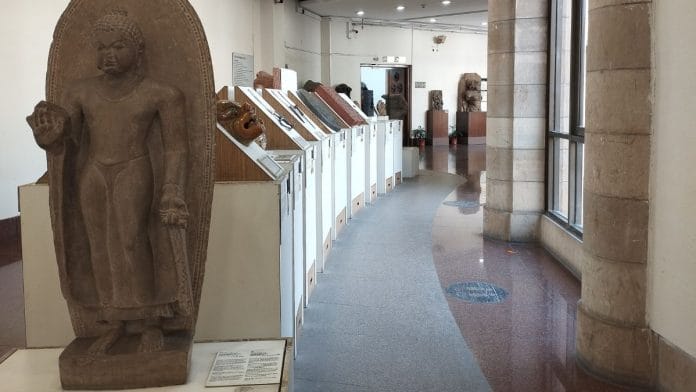New Delhi: A contingent of VIP visitors gazes at the Dancing Girl and the statue of the Mother Goddess on display at the Harappan Gallery in Delhi’s National Museum. The museum guides smile, nod, and murmur answers to the VIP guests, but they cannot completely mask their inner turmoil. They have learned that these prominent symbols of an ancient civilisation, along with two hundred thousand artefacts and works of art dating back thousands of years, will be shifted from the iconic building to a new location by the end of the year.
“How would you react if you were told to leave your home?” asked a senior official at the National Museum who did not want to be named. “I have given 34 years of my life to this museum; I know every crack and walls here.”
The lack of clarity has everyone—from guards to guides—confused and worried about whether they will have a job next year. Curators are weighed down by the idea of ensuring that every item, from a shard of pottery from the Mauryan era to the miniature Dasavatara shrine, are moved without damage to a secure location. It’s all everyone is talking about in break-rooms, bathrooms, and galleries.
The National Museum, along with the Indira Gandhi National Centre for the Arts (IGNCA) and the annexes of the National Archives of India, is slated to be consumed by Narendra Modi’s Central Vista project. The artefacts will eventually be relocated to Yuge Yugeen Bharat National Museum, a new museum complex spanning 1.17 lakh square metre situated in the North and South blocks on Raisina Hill. It will be the world’s largest museum, similar to the National Mall in Washington DC.

With less than three months to go, work on moving the displays has not yet begun. The fate of the iconic building, designed by architect Ganesh Bikaji Deolalikar, and the new location for India’s pieces of history remains uncertain. However, the senior official cited above says he’s heard that the museum building will not be demolished. The galleries and corridors of the museum are rife with rumours and rumblings of change.
Closed-door meetings are fuelling speculation. A museum historian said that the details are being hammered out by the Ministry of Culture. The official said that they met with Union Culture Secretary Govind Mohan to find “a suitable space for storage” and discuss the future of the existing staff.
“We know for sure that it is going to happen, but we do not yet have a brief. We have no idea how it will happen,” the museum official told ThePrint.
ThePrint tried to contact Joint Secretary Mugdha Sinha and Deputy Secretary Jivan Bachhav at the Ministry of Culture via phone calls and emails but did not receive any response. The article will be updated once a response has been received.
Also read: PMs’ Museum bedazzles and entertains. But it doesn’t tell us who we are
Handle India’s history, with care
The most delicate task will be relocating nearly 200,000 antiquities, paintings, tapestries, pottery shards, mediaeval weapons, jewellery, coins, and other artefacts from all the galleries to the temporary storage facility.
“Artefacts require a specific environment, temperature, and lighting. We are worried about whether the administration has considered all these factors while planning the relocation,” the official said.
The artefacts have been categorised into three distinct groups, with the most significant being the AA category. “They are the rarest among the rare. This category includes immovable antiquities,” said the official. It includes a rare copy of the Quran.
He doesn’t know how many items fall into this category. “We do not have a complete listing. The position of section head in this department is still vacant.”
The second category is ‘A’, which includes rare artefacts such as the head of Shiva and Parvati from the Gupta Period (4th-6th century CE), and then there’s the general category.
“We will be shifting India’s history. We could lose jobs if there is any damage to these antiquities,” the museum official added.
Staff have good reason to worry—some of the items include delicate fabrics, palm leaf manuscripts, and terracotta work. Their concern is tinged with resentment due to being kept in the dark about a task of this magnitude.
“None of the staff were present at the planning meeting,” said a female curator.
The custodians of India’s history know all too well that this plan can change depending on the outcome of elections and the mood of the nation. However, they have seen similar plans executed by other countries. In 2021, 22 ancient Egyptian royal mummies were transported across Cairo in specially designed capsules to a new museum.
“We have already prepared ourselves for this challenge, but curators are not divine. Anything can go wrong,” said the curator.
Her colleague, however, is confident that the relocation will proceed smoothly. He pointed out that in the past, antiquities have been professionally packed and shipped to other museums
“Everything should be done according to the proper plan,” said the female curator. “We have learned that the new building will be ready by 2025. By then, this museum will disappear.”
Also read: Nehru Museum and Library grew into a record of modern India. New name won’t take that away
‘Is my job secure?’
In the quiet, imposing halls of the National Museum, a group of four men armed with sticks suddenly turns around the corner, making shrill noises. They roar and hoot as they sprint down the hallway, chasing a family of curious monkeys.
But what if the new location doesn’t have a monkey problem, asks Vipin. “What will happen to them?”
At 42, Vipin has been working in the museum’s multi-purpose services department for the past 20 years. He started in 2003, earning Rs 80 a day, and now takes home Rs 18,000 a month. His duties don’t involve dealing with monkeys; he sorts through files, categorises paperwork, and handles clerical odd jobs. However, he’s a contractual employee, not a permanent staff member. Worry lines crease his face as he wonders whether he’ll lose his job.
“Where will we find jobs at this age? My entire family depends on me,” Vipin adds.
Almost everyone, from guards to senior officials, said that they need more hands.
“There are around 120 permanent staff members, and there are vacancies in sixty percent of the positions within the museum,” said the senior museum official. This does not include contractual workers like Vipin.
“If someone has a contract-based job in the education department, and let’s suppose that department doesn’t have a place in the new museum, then what happens?” said the official. “Many of our workers are outsourced, so their contracts can be terminated at any time.”
Grand but not inclusive
At the same time, there’s a sense of excitement about what could potentially become the world’s biggest museum. The museum official and his colleagues acknowledge the necessity for a larger space.
In May, Prime Minister Modi unveiled a virtual walkthrough of the upcoming Yug Yugeen Bharat National Museum, which will showcase India’s 5,000-year history through several themed divisions.
“The government has the same plan to develop it into a museum along the lines of Washington DC. This will free up the North and South Block and put that space to use,” the museum official added. However, the location is in a high-security area at the heart of the government, and tourists are concerned it may not be as easily accessible as the current location.

Alka, 55, stops at a portrait of Buddha with her grandson. They have come from Ahmedabad in Gujarat for a holiday in Delhi, and their exploration of India’s history begins at the National Museum. “The museum should remain here. India Gate is nearby, which makes it easy for us visitors to come here,” she said.
For people like Vipin and the curator, the existing building is the only office they know. Its history is as important as the treasures it houses.
“This is a national museum. This is national pride. This feeling should be preserved,” the female curator said.
The new museum will reflect an India that is flexing its muscles. It marks the beginning of a new chapter—but not everyone at the old museum may have the privilege to be a part of it.
(Edited by Prashant)






